From Oct. 19, 2025, Florence welcomes back one of the most extraordinary models of the Renaissance. The Fluvial God byMichelangelo, designed for the Medici tombs in the New Sacristy of San Lorenzo, returns to theAccademia delle Arti del Disegno, where it was donated in 1583 by Bartolomeo Ammannati to be studied by young artists. After centuries of movement and complex restoration, the work is now on display in a room designed to enhance its plastic strength and historical relevance, along with a lunette by Francesco Granacci and a wooden Crucifix from the Sangallo workshop.
The initiative is the result of a long process of protection and enhancement promoted by General Secretary Giorgio Bonsanti, who has followed the vicissitudes of Michelangelo’s model over the years, and by President Cristina Acidini, who led the fundraising campaign necessary for the recovery, flanked by technical secretary Enrico Sartoni and assistant Laura Turchi. The installation project bears the signature of architects David Palterer and Norberto Medardi, who designed a sober and thoughtful environment to offer the public a close enjoyment of the work.
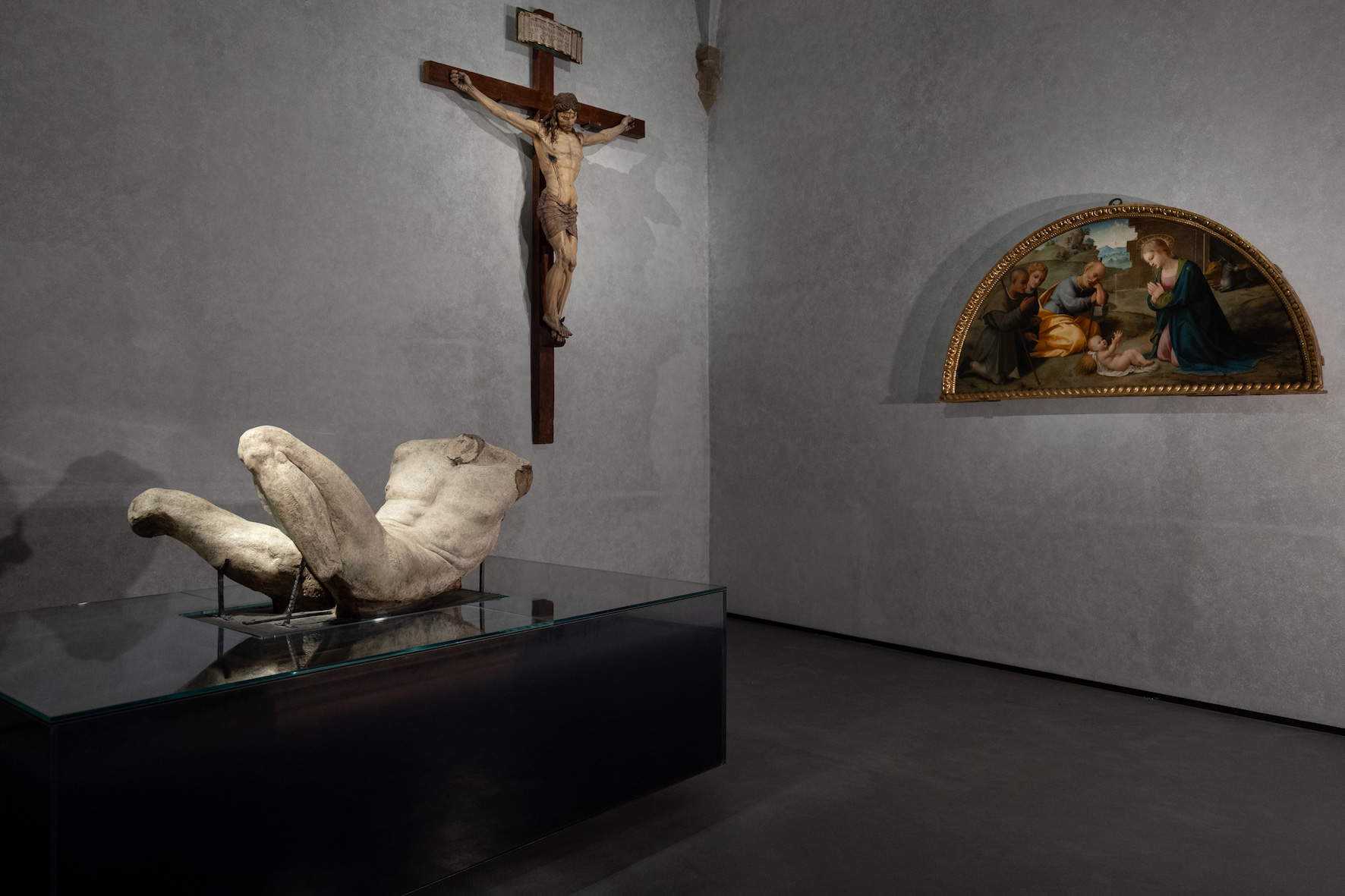
Founded by Giorgio Vasari in 1563 at the behest of Cosimo I de’ Medici, the Accademia delle Arti del Disegno is the oldest art institution in the Western world. Established to elevate the social status of artists and provide a space for discussion on the arts, it had Michelangelo as its ideal father and teacher. Even today, the Academy carries on that original mission, promoting visual arts, music, performing arts, and the humanities and sciences. The official unveiling of the new exhibit will take place on Oct. 18, the feast day of St. Luke the Evangelist, patron saint of artists, with an event reserved for Academicians, while the opening to the public is scheduled for the following day. The River God, modeled between 1526 and 1527, was intended to complete the monumental complex dedicated to Giuliano and Lorenzo de’ Medici, one of the symbolic sites of Renaissance Florence. The figure, which recalls the river sculptures of classical antiquity, was intended to be placed lying at the foot of the tomb of Lorenzo Duke of Urbino, symbolically evoking the flow of life. Made of unfired earth with plant and animal fibers, casein and a core of iron wire, the model represents an outstanding example of Michelangelo’s creative method, based on continuous experimentation and a deep study of anatomy. Its state of preservation, despite the fragility of the materials, constitutes an extraordinary fact that allows a close look at the artist’s design process.
The history of the River God is marked by centuries of attention and conservation interventions. Donated by Ammannati for educational purposes, over time it was subjected to more or less invasive restorations, such as the insertion of metal elements in the 18th century. Archival documents attest to the use of wooden and chestnut structures to facilitate its movement without compromising its integrity. After periods of oblivion, the work was rediscovered in 1906 in the Plaster Room of the Academy of Fine Arts and transferred to the Accademia Gallery for storage. In 1964 it was deposited at the Casa Buonarroti to ensure better conservation conditions, at the initiative of director Charles de Tolnay. In the 1980s restorer Guglielmo Galli reported serious structural problems, including cracking and deformation, aggravated by the presence of ancient bronzing that altered its color and legibility.
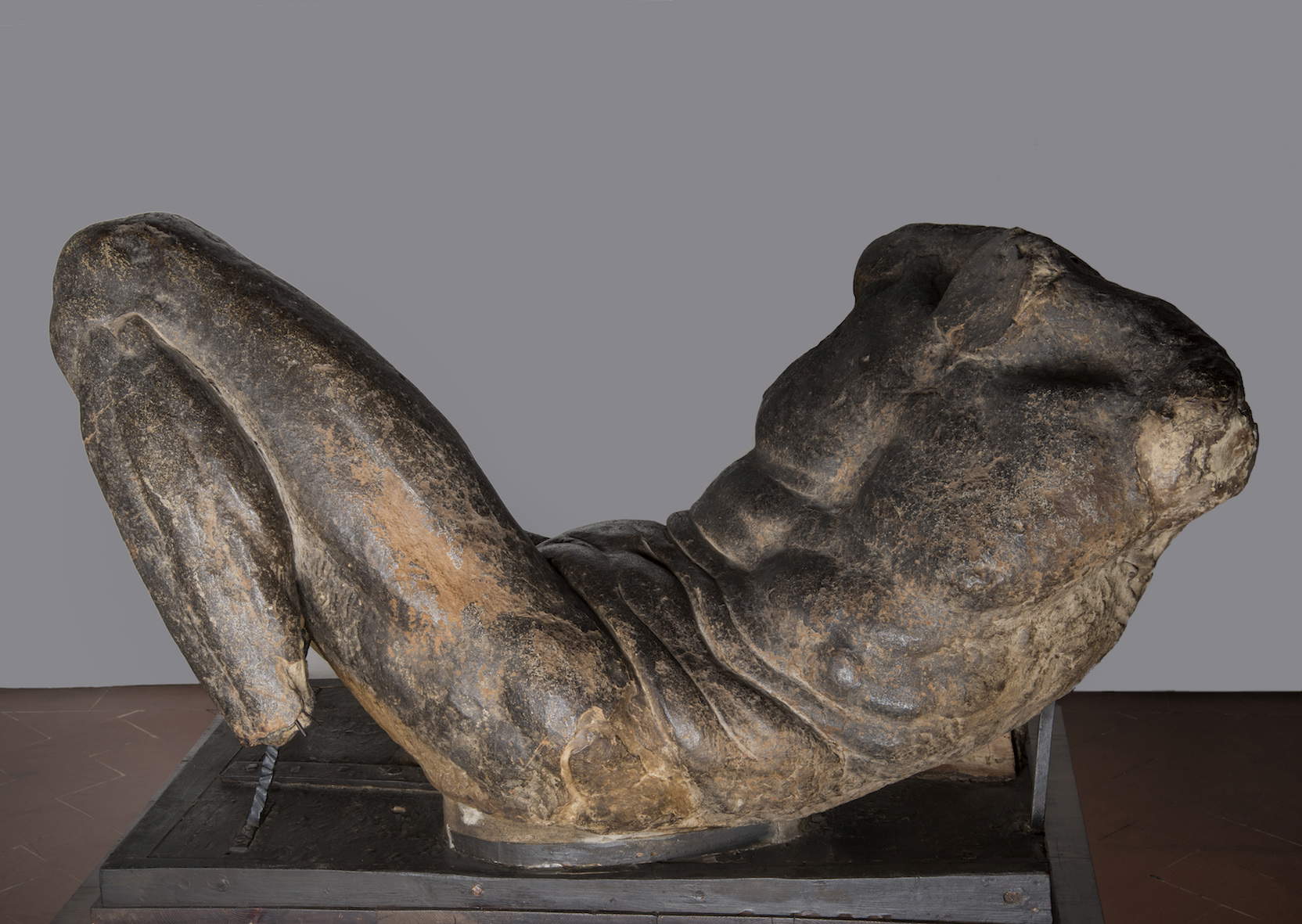
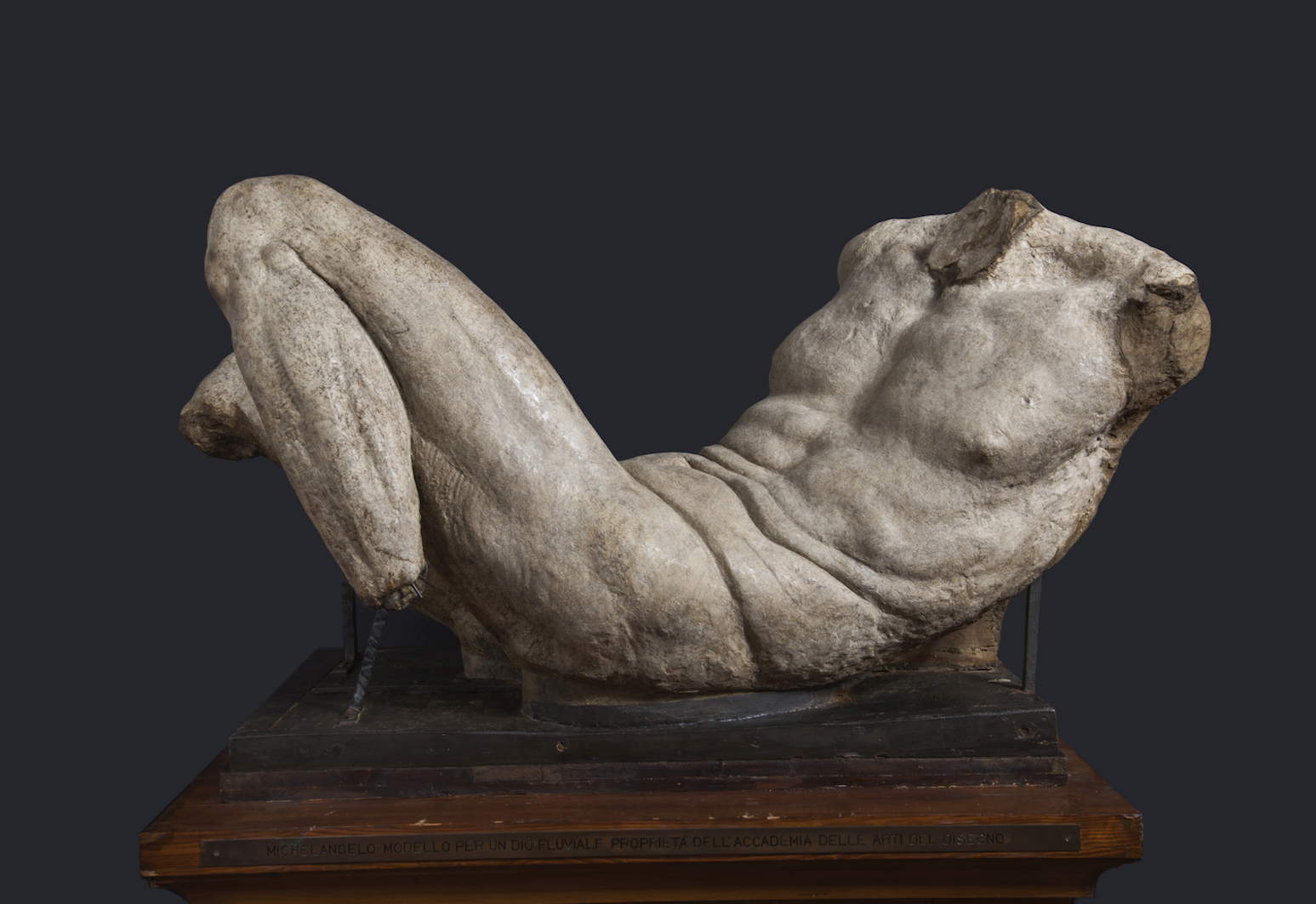
The complex technical difficulties of the restoration led to its postponement for a long time. The turning point came in 2015, when a loan request for the exhibition I Medici e le Arti a Firenze nel secondo Cinquecento at PalazzoStrozzi made a radical operation necessary. The restoration, carried out by Rosanna Moradei of the Opificio delle Pietre Dure with the support of Friends of Florence and under the direction of Giorgio Bonsanti and Laura Speranza, took place between 2015 and 2017. After an anti-wormwood treatment, work was done on the internal structure and surfaces with targeted consolidations. The bronzing was removed and the surface freed thanks to microaspirations and solvent-gel, restoring the work’s original materiality without erasing the traces of time and the modifications it had undergone. After the exhibition at Palazzo Strozzi, the model was transferred to the venue on Via Orsanmichele, where it remained protected until the completion of the new hall.
Palterer and Medardi’s exhibition design envisioned an essential space, dominated by neutral tones and designed to enhance the monumentality of the model. The statue is placed on a wooden base inside a glass parallelepiped made in Venice, reminiscent of the flow of water, and is equipped with earthquake-resistant devices to ensure its safety. The new room also houses two important works from the early 16th century, both of which were given to the Academy in the early 19th century. The lunette with theAdoration of the Shepherds by Francesco Granacci, dated around 1500, testifies to the artistic and personal bond with Michelangelo and, after recent restoration, has recovered the original brilliance of his palette. Next to it, the wooden Crucifix from the Sangallo workshop (1510-1520), from the Chapel of St. Luke, represents one of the rare large specimens that has come down to the present day and stands out for its quality and state of preservation. Restoration has removed the dark repainting stratified over time, restoring the original polychromy in all its luminosity.
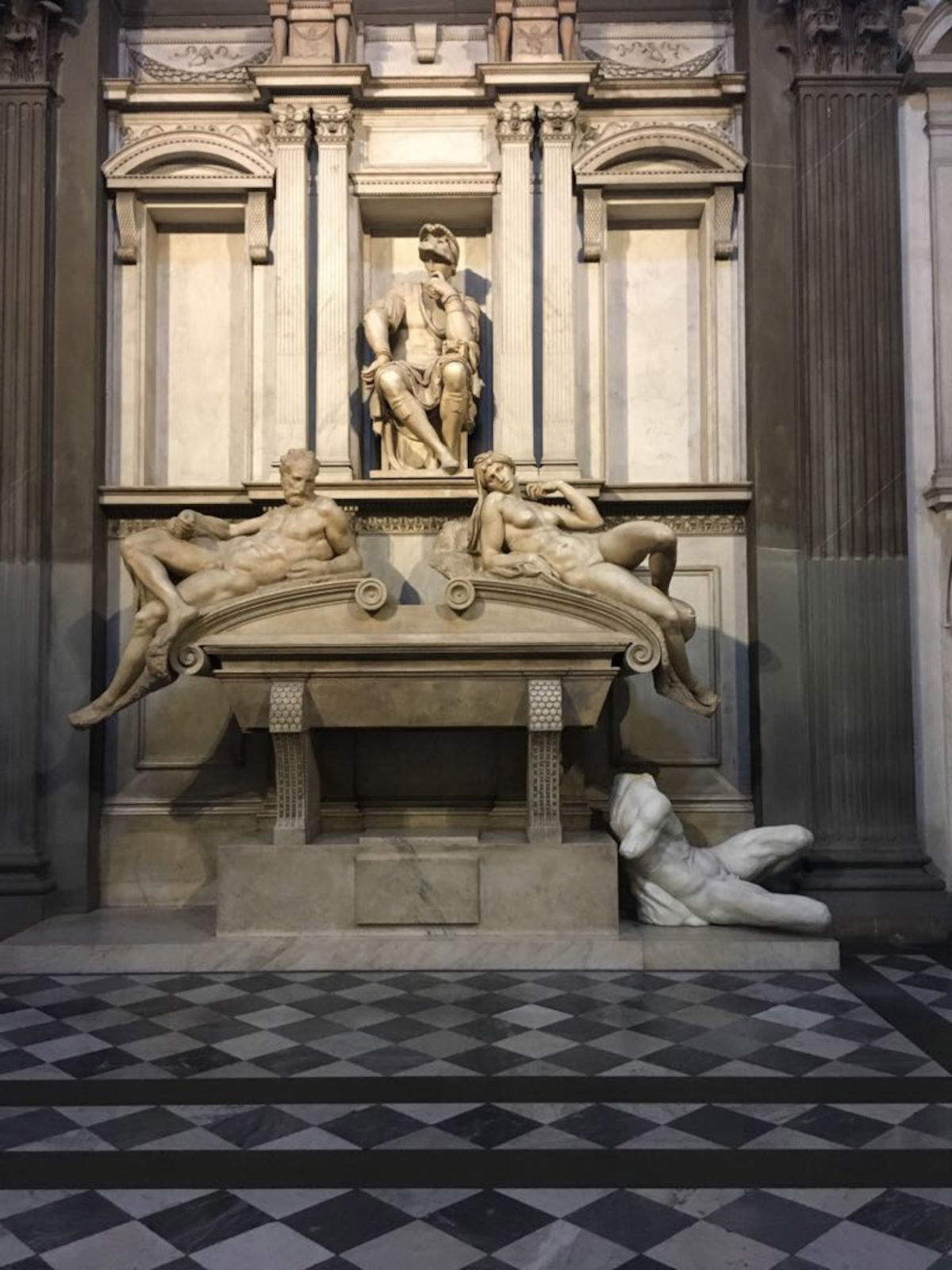
The room will have a dedicated entrance at Via Orsanmichele 6 and will be open to visitors thanks to the collaboration of the Friends of the Museums of Florence association and several professors from the Accademia. It will be open on Mondays, Tuesdays, Wednesdays and Fridays, with hours of 10 a.m.-1 p.m. and 2-5 p.m. in winter, and 10 a.m.-12:30 p.m. and 4-6 p.m. in summer. Please see www.aadfi.it for Saturday and Sunday openings. Admission is subject to a voluntary donation of not less than five euros.
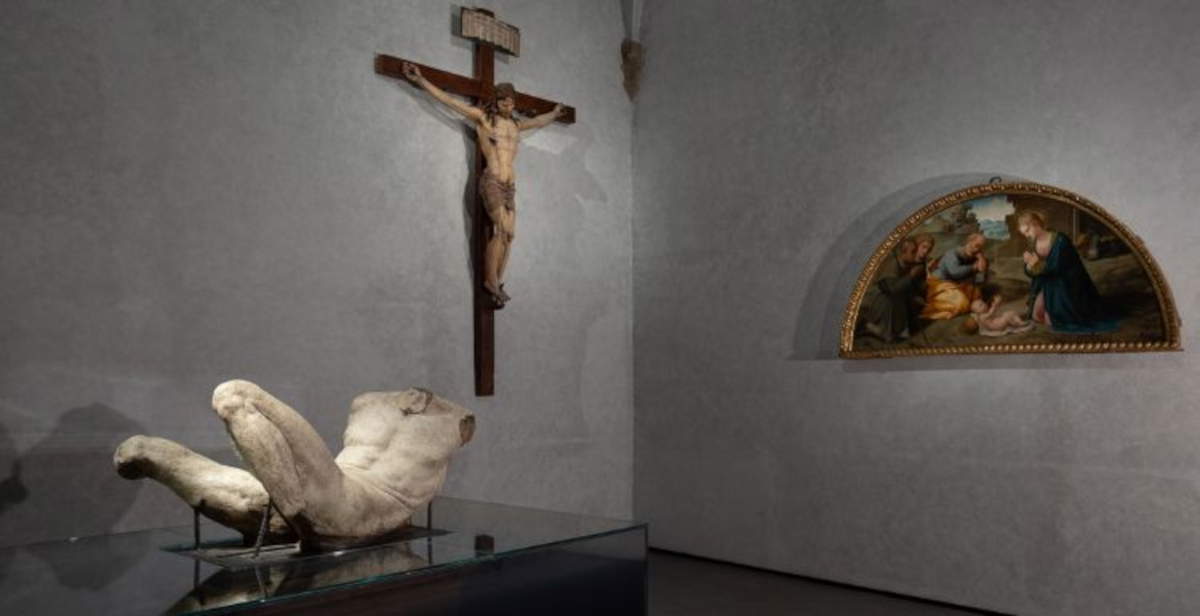 |
| Michelangelo's River God returns to Florence's Accademia delle Arti del Disegno |
Warning: the translation into English of the original Italian article was created using automatic tools. We undertake to review all articles, but we do not guarantee the total absence of inaccuracies in the translation due to the program. You can find the original by clicking on the ITA button. If you find any mistake,please contact us.